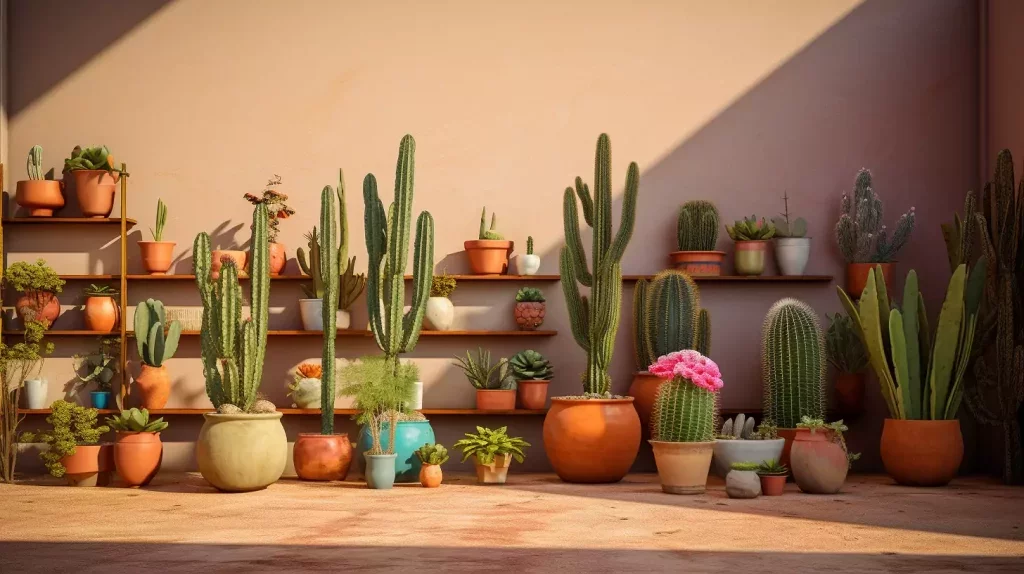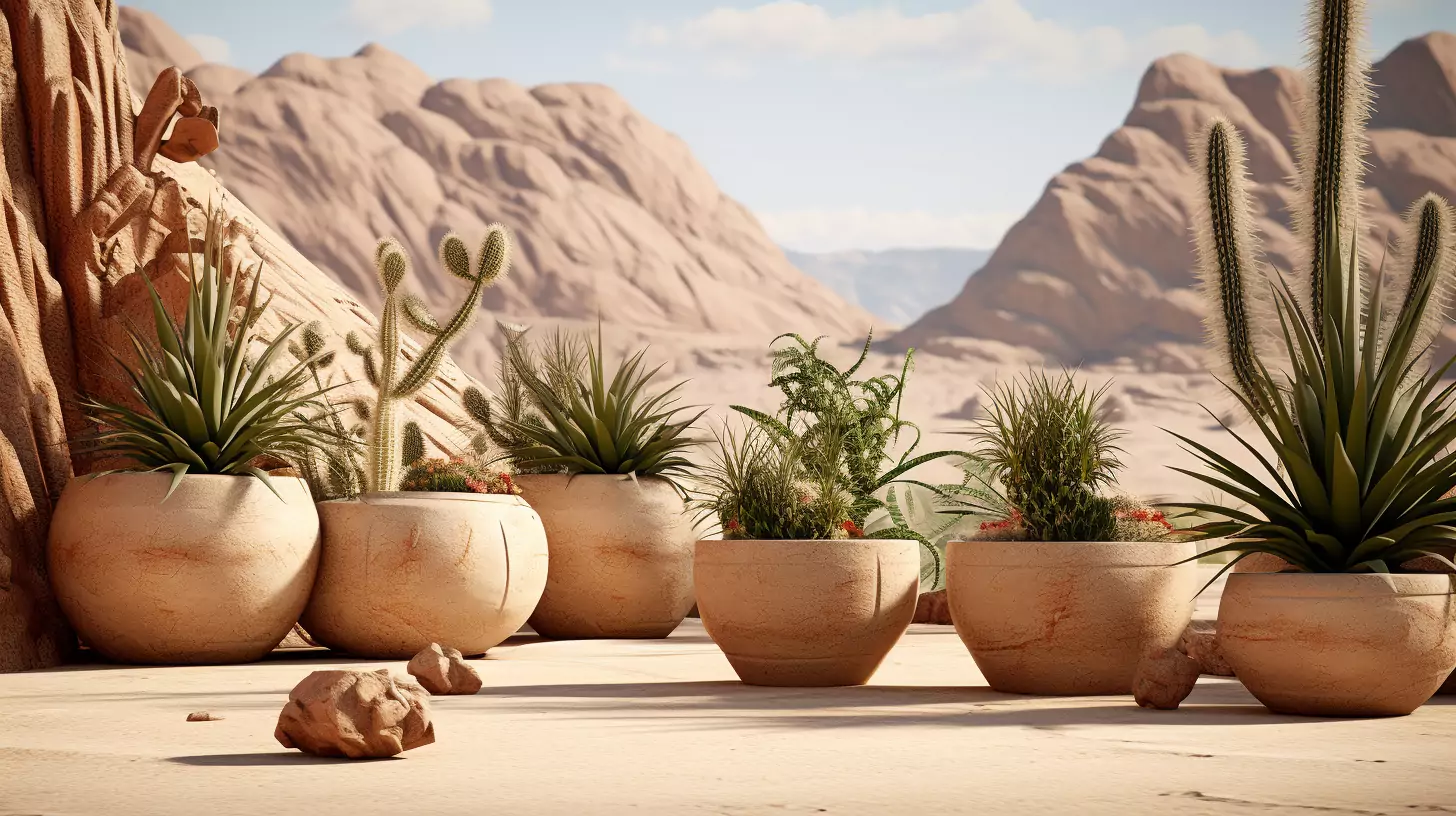Hello, fellow plant enthusiasts! 🌱 Today, we’re diving into the world of drought-tolerant indoor plants. Whether you’re often away from home, living in a dry climate, or simply seeking low-maintenance green companions, this guide is your ticket to a lush, worry-free indoor garden. Let’s explore these resilient beauties that can thrive with minimal watering.

Understanding Drought-Tolerant Plants
Drought-tolerant plants have adapted to survive in environments with little water. They store moisture in their leaves, stems, or roots, and often have other features like waxy coatings or reduced leaf surfaces to minimize water loss. This makes them perfect for indoor environments where regular watering can be a challenge.
Top Drought-Tolerant Indoor Plants
1. The Succulent Squad
Succulents are the poster children of drought tolerance. Their thick, fleshy leaves store water, allowing them to go long periods without a drink. Popular varieties include:
- Aloe Vera: Known for its medicinal properties.
- Jade Plant (Crassula ovata): A symbol of good luck.
- Echeveria: Offers rosettes of colorful leaves.
- Zebra Plant (Haworthiopsis fasciata): Features striking striped leaves.
- Burro’s Tail (Sedum morganianum): Has trailing stems perfect for hanging baskets.
2. The Cacti Crew
Cacti are virtually synonymous with drought tolerance. They’re not just spiky; they’re survivors, storing water in their stems and adapting to the driest of environments. Some favorites include:
- Christmas Cactus (Schlumbergera): Blooms beautifully around the holidays.
- Bunny Ear Cactus (Opuntia microdasys): Known for its unique, ear-like pads.
- Star Cactus (Astrophytum asterias): A slow-growing cactus with a star-like shape.
3. The Resilient Foliage Plants
Not all drought-tolerant plants are succulents or cacti. Some leafy plants can also withstand dry conditions, such as:
- Snake Plant (Sansevieria trifasciata): Known for its air-purifying qualities.
- ZZ Plant (Zamioculcas zamiifolia): Boasts glossy leaves and a tough nature.
- Ponytail Palm (Beaucarnea recurvata): Features a bulbous trunk and long, curly leaves.
- Rubber Plant (Ficus elastica): Has large, leathery leaves and is an excellent air purifier.
Caring for Drought-Tolerant Plants
Watering Wisely
The key to caring for these plants is not to overwater. Here’s how:
- Check the Soil: Before watering, check if the top inch of soil is dry.
- Water Deeply but Infrequently: When you do water, do it thoroughly, allowing excess water to drain.
- Less is More: Err on the side of underwatering rather than overwatering.
Light Requirements
Most drought-tolerant plants love sunlight but vary in their needs:
- Direct Sunlight: Many cacti and succulents prefer bright, direct light.
- Bright, Indirect Light: Plants like the Snake Plant and ZZ Plant thrive in bright but indirect light.
- Adaptable to Low Light: Some, like the Snake Plant, can also tolerate lower light conditions.
Potting and Soil
Proper potting is crucial:
- Well-Draining Soil: Use a potting mix designed for cacti and succulents.
- Drainage Holes: Ensure your pots have drainage holes to prevent water from pooling.
Fertilizing
While not heavy feeders, a little fertilizer can go a long way:
- During Growing Season: Feed your plants with a diluted, balanced fertilizer once a month during spring and summer.
Designing with Drought-Tolerant Plants
Incorporating these plants into your home decor can be both fun and creative. Here are some ideas:
- Create a Succulent Garden: Group different succulents together for a mini indoor garden.
- Hanging Planters: Utilize hanging planters for trailing varieties like Burro’s Tail.
- Terrariums: Make a dry terrarium with a mix of small succulents and cacti.
- Accent Pieces: Use individual plants like a large Snake Plant or Ponytail Palm as focal points in a room.
Common Challenges and Solutions
Even the hardiest plants can face issues:
- Overwatering: The most common problem. If leaves become yellow or mushy, you may be overwatering.
- Underwatering: If leaves start to shrivel, they might need a drink.
- Pests: Keep an eye out for pests like mealybugs or spider mites, and treat promptly with insecticidal soap or neem oil.
Benefits of Drought-Tolerant Indoor Plants
- Low Maintenance: Perfect for busy or forgetful plant owners.
- Air Purification: Many improve indoor air quality. The Snake Plant, for instance, is a notable air purifier.
- Adds Aesthetic Value: They bring beauty and a touch of nature to your indoor space.
Caring for drought-tolerant indoor plants is a rewarding experience that brings beauty and a sense of calm to your home. They ask for so little yet give so much in return, from purifying the air to adding a touch of greenery to your living space. Whether you’re a seasoned plant parent or just starting, these resilient plants are sure to bring joy and life into your home. Happy planting! 🌵💚
Megan Stewart, a houseplant aficionado and biologist, resides in the city of Portland, Oregon, USA. Her passion for greenery is matched only by her academic prowess; Megan holds a degree in Biology from the University of Oregon. This background has provided her with a rich understanding of the biological intricacies of plant life, which she skillfully applies to her collection of indoor plants.
Megan's home is a testament to her love for all things green, filled with a diverse array of houseplants ranging from exotic orchids to robust succulents. When she's not tending to her indoor garden, she spends her time with her beloved pets, a constant source of companionship and joy. Her articles are a reflection of her life's passions, offering readers a blend of practical plant care advice, and insightful biological tidbits.
Through her writing, Megan aims to inspire others in the USA and beyond to create their urban jungles and foster a deeper connection with nature.


